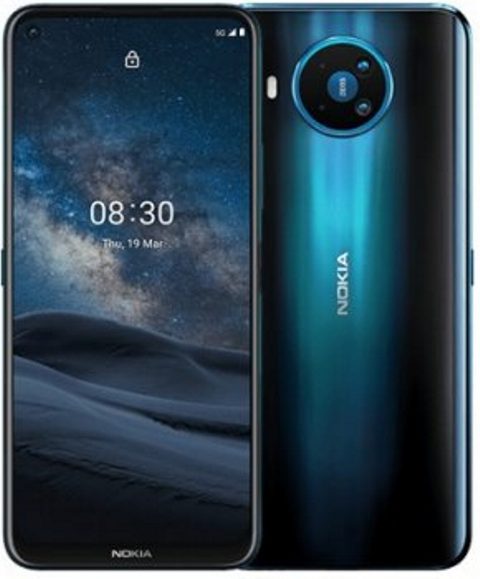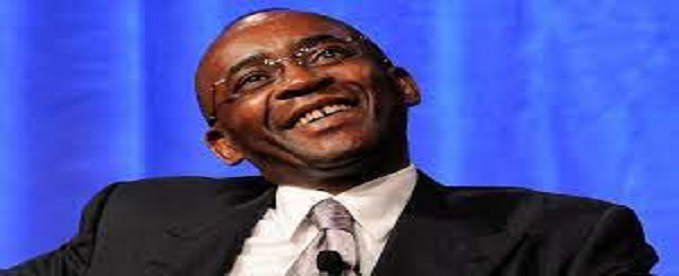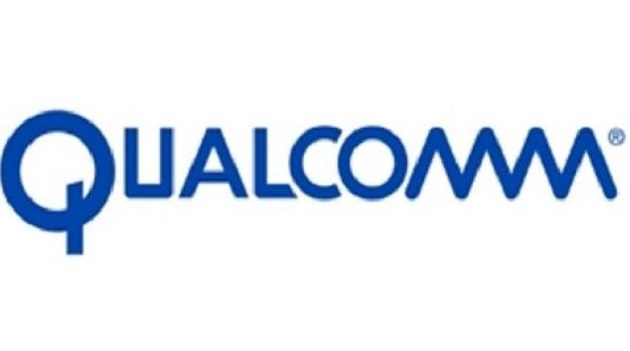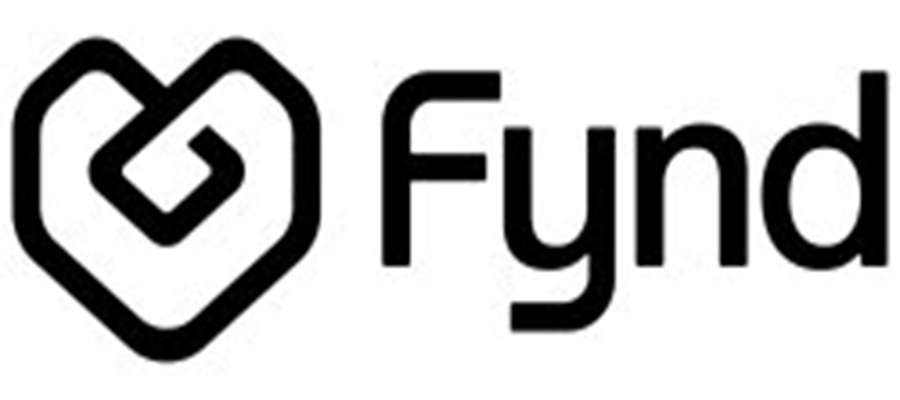Telecom
HMD Brings Significant Step Change to its Smartphone Category

HMD Global, the home of Nokia phones, has announced two new additions to its entry-level smartphone family, the Nokia 3.4 and Nokia 2.4, a new accessories range and HMD Connect Pro offering enterprises a secure and transparent global data roaming service.

The diverse range of launches further solidifies the company’s transformation into a holistic mobile device and service provider.
Florian Seiche, Chief Executive Officer, HMD Global said: “Without doubt, this has been an eventful year for everyone, and our hearts go out to those that have been impacted by the circumstances of 2020. For us, it’s truly been a transformational year, and we’ve adapted to the changing times.
“I am extremely excited to broaden our value-add services for enterprise with the introduction of HMD Connect Pro, offering unprecedented levels of flexibility and security. The Nokia 3.4 and Nokia 2.4 are important new updates to our core value smartphone range. I am very proud to see the truly future-proof 5G experience of our Nokia 8.3 5G reaching the hands of consumers starting from today, and excited for our partnership with No Time To Die – proving a Nokia phone really is the only gadget you’ll ever need.”
Introducing the latest additions to the Nokia smartphone family
The new Nokia 2.4 comes with AI imaging, two days’ worth of battery life and a large HD+ screen. For those looking for more, the Nokia 3.4 offers an advanced triple camera with ultra-wide lens, a serious performance upgrade and more screen real estate thanks to the punch-hole screen.
Holding true to always delivering maximum innovation at great value, the two new smartphones are entry-level marvels, offering great value experiences. With modern features and stunning design in a more accessible, Android-powered future-proof package, these phones are perfect for those seeking out affordable, long-lasting purchases.
Juho Sarvikas, Chief Product Officer and Vice President of North America, HMD Global: “It’s no secret that consumers around the world have become more mindful about their spending and are opting for less expensive, more long-lasting products from brands they know and trust. It’s therefore more crucial than ever that our products stand the test of time – and our commitment to delivering reliable and trustworthy Nokia phones remains unswerving.
“That’s why we’re broadening our entry-level smartphone family with the new Nokia 3.4 and Nokia 2.4, offering reliable software and hardware that Nokia phone fans have come to know and love, fresh experiences and premium design that you can be proud of – at prices that are accessible.
“Always inspired by our Finnish roots, with these latest additions we’re introducing a fresh colour palette to the portfolio through new earthy tones with dazzling finishes, taking our design another step closer to home.”
Nokia 2.4
The next generation Nokia 2 brings modern essentials like advanced AI imaging giving you dedicated Night mode and Portrait Editor that lets you art direct your world with its custom shapes and blurred backgrounds – even after you’ve taken your shot; a convenient fingerprint sensor and AI face unlock, offering effortless access and added security, in a durable design that’s not only built to look good but also to last.
Watch, learn and create on the large 6.5” HD+ screen and, thanks to its two-day battery life1, you’re free to enjoy your favourite apps and games for longer. Plus, the Nokia 2.4 comes with our Android promise, giving you three years of monthly security updates and two years of OS updates, meaning it’s ready for Android 11 and 12.
Nokia 3.4
The new Nokia 3.4 offers a serious performance upgrade thanks to the Qualcomm® Snapdragon™ 460 Mobile Platform giving you more power to get the best out of your phone.
Take your creativity to the next level with a large 6.39” HD+ screen with a punch-hole front camera and a mighty triple rear camera with an ultra-wide lens and AI imaging. The Nokia 3.4 comes with Android 10 OS and the Nokia smartphone Android promise, receiving years of security and software upgrades.
All of this powered by the signature two-day battery life and wrapped up in a premium timeless design that comes in three new vibrant, living colours, inspired by Nordic nature, delivering style with durability that’s true to its Finnish roots.
Nokia 8.3 5G goes on sale globally
Today also marks the global sales start of the highly anticipated Nokia 8.3 5G. Showcasing the commitment to security, speed and innovation by meeting the demands of the world’s toughest customers – MI6 agents – the Nokia 8.3 5G is the smartphone of choice by the newest 00 agent in the upcoming James Bond movie No Time To Die, premiering this November.
Featuring a powerful PureView quad-camera with ZEISS optics giving you immersive movie-like shots with ZEISS Cinema effects and OZO audio, the Nokia 8.3 5G is the ideal smartphone for those who want to elevate their creativity.
Designed to support multiple and evolving 5G network deployments, the Nokia 8.3 5G condenses more than 40 different RF components into a single module, making it not only a global device but also a future-proof smartphone which is ready for the next step in 5G.
The Nokia 8.3 5G begins to go on sale globally from today starting at a global average price of 599 EUR. Additionally, all Nokia 8.3 5G owners will receive a free 6-month trial of Google One. Capture and edit on the go with faster upload speeds and an additional 100GB of online storage across Google Drive, Gmail, and Google Photos – an all-in-one membership that can be shared with up to five additional people.
Lashana Lynch, who plays 00 agent Nomi in No Time To Die, said: “The world we live in now means we all have the ultimate gadget in our pockets and it’s amazing what smartphones can do nowadays. It’s exciting to be unveiling this new smartphone to celebrate the release of No Time To Die in November, and the Nokia 8.3 5G is proof that Bond gadgets are always ahead of the game.”
Introducing a range of new accessories: inspired by nature, packaged to protect it
Also launching is a range of new Nokia-branded audio accessories featuring the Nokia Earbuds Lite, and a brand-new Nokia Portable Wireless Speaker with integrated microphone – the first in the portfolio – and new protective cases. The new accessories are all wrapped up in sustainable packaging made from 100% recyclable paper, taking the company one step closer towards reducing the environmental impact of its business and products.
Alexander Lambeek, Global Head of Accessories, HMD Global: “Our commitment to delivering premium experiences at accessible price points extends beyond phones. Today we’re bringing the same quality you would expect from a Nokia phone to our new range of accessories.
“We are proud to introduce an entire mobile open ecosystem of companion products bringing exceptional functionality in a familiar design that our fans know and love, all wrapped up in eco-friendly packaging. We always listen to what our customers are after and take feedback as key component in product development.
“The new accessory range has been no exception to this – people are exercising outdoors more than before, so we made sure to make our earbuds waterproof; they have also become more mindful of what they’re buying, in terms of both cost and sustainability, so we made sure to keep the prices accessible and packaged everything in 100% recyclable paper.“
Nokia Power Earbuds Lite
The new Nokia Power Earbuds Lite let you take your favourite songs with you wherever you go offering 35h of play time and comfortable design with intuitive touch control giving you easy navigation whether it’s taking calls or skipping tracks.
The IPX7 certification will make them waterproof up to 1m for 30 minutes, meaning you can break a sweat in the gym or run in the rain worry-free, whilst the 6mm graphene speaker drivers give you clear-cut sound.
The original Nokia Power Earbuds are being refreshed with two new colours – Polar Night, inspired by the Nokia 8.3 5G, and a fresh new colour – Mint.
Nokia Portable Wireless Speaker
The Nokia Portable Wireless Speaker is designed to be truly portable and will give you up to 4h of play time, while the integrated microphone will make group calls on the go easier than ever. You can also pair two speakers for high quality stereo audio output. Just like all our audio devices, it comes with universal Bluetooth 5.0 compatibility, so you can connect to all your devices, whatever the brand.
Protection and support for your Nokia smartphone
The new accessory range also includes:
- Nokia Clear Case – for your Nokia 2.4, Nokia 3.4 and Nokia 8.3 5G – offering increased impact protection and enhanced handling via easy-grip material whilst the seamless ultra-slim lightweight design allows you to showcase your phone’s beautiful design.
- Nokia Entertainment Flip Cover for Nokia 3.4 with vegan leather delivers a functional solution for those who want more from their phone case – overall protection, screen cover, card storage and a foldable entertainment stand.
HMD Connect Pro: a secure and transparent global roaming SIM solution for enterprises
In a move that further diversifies the company’s services offering, HMD Global today announces HMD Connect Pro. Offering an easier way to stay connected across the globe, HMD Connect Pro offers an easier way for businesses to keep their smartphones and other devices connected across the globe in a secure and transparent way.
The service offers centralised SIM management, giving total control and fraud prevention, with securely routed real-time usage information, live diagnostics and troubleshooting.
With over 600 networks across 160 countries, HMD Connect Pro provides full flexibility, transparent and extremely competitive billing and a simple yet robust SIM management console at rates that match your usage needs regardless of how many countries your business operates in.
Telecom
Why Econet Wireless is Switching to VFEX

After nearly 30 years on the Zimbabwe Stock Exchange (ZSE), Econet Wireless, the country’s biggest technology company, is preparing to leave the bourse and move its property and infrastructure assets to the US dollar-based Victoria Falls Stock Exchange (VFEX).

Econet plans to spin off its towers, property and power installations into a new company, Econet InfraCo, which will be listed on the VFEX. Its mobile network operator business will be delisted from the ZSE.
Econet believes the market has failed to properly value its business and its assets. At the time Econet first released a cautionary on December 3, its market capitalisation was the equivalent of US$628 million.
A rally over the past days has lifted it to a market capitalisation – the number of shares times the share price – to around US$1 billion.
“For the last several years, the company has traded at a significant discount to its peers across Africa which trade at 6 – 8x EV/EBITDA.
“These peers have all already separated and realised value from their tower infrastructure whereas the company still owns its tower and other passive infrastructure which the company has now housed under a separate infrastructure company to be listed on the Victoria Falls Stock Exchange,” Econet said.
Econet will keep 70% of Econet InfraCo, with up to 30% used to settle an offer to shareholders who do not wish to remain invested.
The company argues that infrastructure assets are better suited to the VFEX, which trades in US dollars and attracts investors familiar with property and long-term infrastructure.
“Unlike the mobile network operator business in Zimbabwe, infrastructure assets represent a different class of investment, one that is better understood and valued within USD-based property and infrastructure markets.
“This is demonstrated by the higher Price-to-Earnings multiples at which listed real estate and infrastructure companies trade on the VFEX,” the company said.
Econet dominates Zimbabwe’s mobile market, with 88% of voice traffic, 82% of data usage and 73% of all subscribers. It has built the largest portfolio of telecoms assets.
By the end of the second quarter, it had 234 5G sites, 1,700 LTE sites, 1,900 3G towers and 2,860 2G locations.
In the half-year to August alone, it added 27 new 2G–4G sites and 100 new 5G sites.
In addition to these locations, Econet also holds other properties and power assets, including solar installations, Tesla batteries and generators.
The move follows a well-established trend in Africa.
MTN and Airtel Africa sold towers in Nigeria, Ghana, Uganda and Kenya to independent operators like IHS Towers and Helios Towers. Vodacom, Orange and Telkom South Africa have also carved out tower units through sale-and-leaseback deals.
Credit: Newsday
Telecom
Qualcomm Completes Third Edition of Make in Africa Startup Mentorship Program

Qualcomm Technologies Inc. has announced the successful completion of its third annual Make in Africa (QMIA) Startup Mentorship Program, marked by the virtual Make in Africa Finale 2025. The initiative underscores Qualcomm’s long-term commitment to fostering Africa’s vibrant innovation ecosystem through the broader Qualcomm Africa Innovation Platform.

Highlights:
- The 2025 Qualcomm Make in Africa program supported ten innovative startups from Kenya, Tunisia, Nigeria, Benin and Senegal, each addressing local challenges by developing tech-enabled solutions across critical sectors such as healthcare, sustainable agriculture, climate resilience and mobility.
- This year, the program attracted more than 400 applications from 19 countries, showcasing remarkable talent across the continent.
- Farmer Lifeline, of Kenya, was announced as the 2025 Wireless Reach Social Impact Fund winner, recognizing its impactful use of wireless technology.
- Applications for Qualcomm Make in Africa 2026 are now open. Applicants can visit the Qualcomm website to apply.
As a flagship initiative of Qualcomm, the equity-free program shines a spotlight on the creativity and drive of African founders leveraging advanced technologies such as AI, 4G/5G, robotics, connectivity and IoT to address pressing real-world challenges.
Now in its third year, the program remains steadfast in its mission to accelerate early-stage technology startups by providing tailored mentorship, targeted business coaching, expert engineering consultation and comprehensive intellectual property protection guidance – exemplified by resources such as Qualcomm’s L2Pro Africa training. This holistic support empowers founders to transform their visionary ideas into sustainable, market-ready solutions.
“This year’s cohort has demonstrated incredible ingenuity, transforming complex challenges into scalable, tech-driven solutions that will drive social and economic impact across the continent,” said Elizabeth Migwalla, Vice President International Government Affairs, Qualcomm Incorporated.
“Innovation is the driving force behind Africa’s future, and this year’s startups are a brilliant demonstration of that. The African Telecommunications Union (ATU) is proud to partner with Qualcomm for the Make in Africa 2025 program,” said John Omo, Secretary General of the ATU. “We are working to harmonize spectrum management policies, regional standards, and open data practices, but we know that true progress relies on large-scale support. That’s why we call on governments, universities, investors, and industry to support these initiatives – and any endeavor that places African ingenuity at the forefront.”
The 2025 cohort includes the following groundbreaking startups:
- Aframend (Nigeria): Uses AI to explore African medicinal plants for new drug discovery and aims to turn local remedies into safe, affordable treatments for diseases.
- AmalXR (Tunisia): Offers AI-powered virtual rehabilitation sessions on everyday devices, enabling easy patient and clinician progress tracking.
- Archeos (Benin): Automates fish farming with solar-powered sensors and feeders, providing real-time data on water quality and feeding levels for improved fish health.
- ClimatrixAI (Nigeria): Installs connected weather and flood stations with an AI platform to forecast street-by-street risk, enhancing early warnings and disaster response for local communities.
- Ecobees (Tunisia): Builds smart hive monitors and a digital platform for real-time insights into beehive-health, to protect bees and crops that depend on them.
- Edulytics (Senegal): Applies AI on handheld ultrasound devices for early detection of liver disease, aiming to make this special screening widely accessible.
- Farmer Lifeline (Kenya): Deploys small, solar-powered devices that scan fields for pests and diseases and send alerts straight to farmers’ phones to protect crops.
- Pollen Patrollers (Kenya): A women-led agritech startup using connected hive technology and AI to keep bee colonies healthy.
- Solar Freeze (Kenya): Provides solar-powered cold rooms with remote monitoring enabling farmers to keep fruits and vegetables fresh and increase earnings.
- Pixii Motors (Tunisia): Designs electric scooters with smart batteries that can be swapped in and out at local stations, aiming to revolutionize urban mobility.
Wireless Reach Social Impact Fund Winner
Kenyan innovator, Farmer Lifeline, was announced as the winner of the 2025 Wireless Reach Social Impact Fund. The fund, sponsored by Qualcomm® Wireless Reach™ Initiative, champions the innovative use of wireless connectivity to address pressing community. As the winner, Farmer Lifeline will receive dedicated funding and tailored technical support to scale its groundbreaking solution.
“Farmer Lifeline stood out with its innovative small solar-powered devices that scan fields to detect pests and diseases. This technology enables local farmers to effectively protect their crops, significantly increase yields, and improve food security”, stated Erica Ciaraldi, Vice President, Wireless Reach, Qualcomm Incorporated.
“Their visionary approach and dedication to agricultural resilience have positioned them as leaders in their field. They are driving meaningful change for smallholder farmers and inspiring others across the continent. This fund will empower them to scale their impact further, enabling broader reach and deeper influence across Africa and the world.”
In recognition of the groundbreaking innovations demonstrated by all finalists, each will receive stipends designed to accelerate their growth, support strategic development and safeguard their intellectual property. This comprehensive support underscores Qualcomm’s commitment to fostering innovation and ensuring these visionary projects can thrive sustainably.
Looking ahead: Launch of Qualcomm Make in Africa Startup Mentorship Program 2026
Building on the significant success of previous years, Qualcomm is excited to launch the fourth year of the program in 2026.
Applications for the 2026 Qualcomm Make in Africa cohort can be found at the Qualcomm website.
Telecom
Fynd Expands Global Footprint, Adds Africa With Surtee Group Partnership

Fynd, an AI-native retail technology platform backed by Reliance Retail Ventures Limited, today announced its official expansion into South Africa, onboarding Surtee Group – one of the region’s most established luxury and fashion retailers – as its first strategic customer in the market. This milestone marks a pivotal moment for African retail, as legacy brands begin embracing digital transformation to meet the demands of a rapidly evolving consumer landscape.

Fynd
Fynd’s entry into Africa reflects its commitment to enabling digital transformation in high-growth retail markets worldwide. The move also comes at a turning point when South Africa’s e-commerce sector is projected to exceed R130 billion ($7.48 billion) in 2025, capturing nearly 10% of total retail sales – a fourfold increase since 2020.
According to Statista, South Africa is expected to have 11.7 million e-commerce users in 2025, with projections reaching 21.5 million by 2029. This growth is being driven by rising internet penetration, mobile-first shopping behaviour, and increasing trust in digital platforms. To meet rising consumer expectations, businesses are investing in AI and unified commerce platforms. Fynd’s scalable, AI-native stack is built to support this shift, enabling agility, personalisation, and operational efficiency.
“South Africa’s retail landscape is evolving fast,” said Ronak Modi, Chief Business Officer – Global at Fynd. “Consumers expect seamless, personalised experiences across every channel, and retailers need agile, intelligent infrastructure to keep up. Our platform is built to unify disconnected systems, speed up fulfilment, and elevate customer engagement; all without adding operational complexity.”
“South Africa is an exciting addition to our global footprint. The market is digitally ambitious, brand-forward, and ready for intelligent commerce infrastructure. Our goal is to help local retailers unify siloed systems, personalise engagement, and accelerate fulfilment without adding complexity.”
Surtee Group operates 94 boutiques and 2 e-commerce sites, comprising the multi-branded stores Levisons and the mono-brand boutiques, namely, Giorgio Armani, Michael Kors, Lacoste, Hugo Boss, VERSACE, TOD’S, Salvatore Ferragamo, Versace Jeans Couture, Emporio Armani, Burberry, Jimmy Choo, Luminance, Paul Smith, Coach, and Armani Exchange. They will implement Fynd’s unified commerce stack, including Storefronts, Order Management System (OMS), Warehouse Management System (WMS), and Clienteling tools to connect in-store and online operations, streamline inventory visibility, and launch brand-specific ecommerce storefronts across its brand portfolio.
While online retail continues to surge, offline sales still represent the vast majority of revenue for retailers in the country. Fynd will enable Surtee Group to unify its offline inventory online, power ship-from-store capabilities, and improve both margins and sell-throughs. Additionally, products like Clienteling will empower in-store teams to engage customers better and drive incremental sales through personalised recommendations and seamless omnichannel experiences.
Fynd’s entry into the market is designed to meet this demand. Its AI-native platform enables real-time stock visibility, ship-from-store capabilities, dark store orchestration, and intelligent customer engagement all within a single scalable solution.
As part of its digital transformation roadmap, Surtee Group aims to consolidate its leadership in luxury and fashion retail while expanding into e-commerce and improving omnichannel agility.
“We were looking for a partner who understood both the technical and strategic dimensions of unified commerce,” said a Surtee Group spokesperson. “Fynd stood out for their proven scalability, consultative approach, and deep experience with global fashion brands, many of which align with our portfolio. Their unified stack enables us to modernise operations while building a connected, brand-first customer experience.”
Fynd has already scaled across India, the GCC, and Southeast Asia, and now adds Africa to its regional presence. With Surtee Group leading the transformation, Fynd is positioned to play a key role in powering unified commerce adoption across South Africa’s growing digital economy.

 General News2 days ago
General News2 days agoJumia Kicks Off December Holiday Sale, Bringing Festive Deals to Shoppers Nationwide

 E-Financial2 days ago
E-Financial2 days agoAccess Holdings Shareholders Approved to Raise N40bn Capital Through Private Placement

 Broadcasting2 days ago
Broadcasting2 days agoNIMC rolls out Pre-Enrolment Portal for seamless NIN registration

 General News2 days ago
General News2 days agoDangote, Monopoly Power, and Political Economy of Failure

 General News2 days ago
General News2 days agoOAU, Baptist Day School Oluponna honour Akano with Distinguished Alumnus Awards

 General News7 hours ago
General News7 hours agoThe Mood Market to Light Up Lagos with a Rooftop Gifting, Food & Lifestyle Fair this Christmas

 General News41 minutes ago
General News41 minutes agoLeo Stan Ekeh: A “Rare Avis”, an Unconquerable Entrepreneur

 General News41 minutes ago
General News41 minutes agoNITDA Wins Triple SERVICOM Honours for Citizen-Centred Service Delivery






















